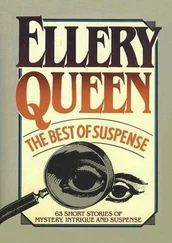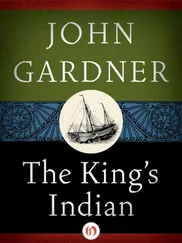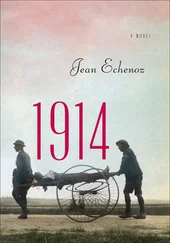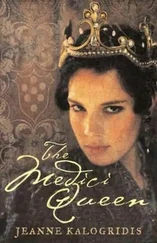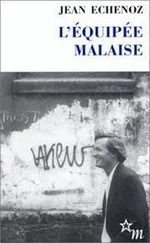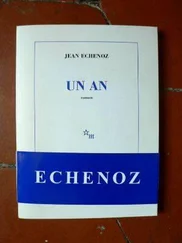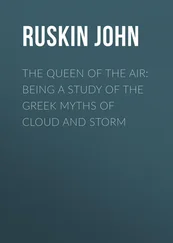He carried a small suitcase containing a change of clothes wrapped around his camera, plus a bound notebook and a memo pad. He stayed in midrange hotels without frills or bedbugs where he didn’t try to speak to anyone: the idea never occurred to him. He would spend two days there and in the evenings, up in his room after having supper with a newspaper in the dining room, he’d copy his jottings into his notebook and then good night all, good night all alone. The more bridges he saw, the fewer people he saw, and his mission sharpened his solitude. He never addressed a living soul beyond the hotel staff or, for example, once when his soles wore out, a man selling locally made shoes.
Chronologically scrupulous, Gluck had begun his bridge research with the forerunners of the art, going off to Dartmoor to inspect the first rough-hewn stone constructions made of two uprights capped by a lintel, the Sassanid arches at Kermanshah, the ancient wooden cantilever structures of Nagqu and, at Iwakuni, the scalloped profile of the Kintai-kyo; he surveyed the Pons Augustus and the aqueduct of Segovia before backtracking to take the measure of the Pont du Gard, summarily exhausting the Classic Age, so the hour had come to deal with the constructions of modern times.
He looked. He loved to watch a flash of August lightning fall upon a pylon vibrating proudly like a lightning rod. He loved to see, when the mist had dissolved the tall piers of the Royal Border Bridge, the dark span left floating in the air above the Tweed, and the somber waters of the Potomac reflecting the pale marble arches of the Woodrow Wilson Bridge or, in a narrow passage of the Adriatic, three arid rock islands linked by a trussed thread of a whiteness so like their own that it seemed they’d spun it out themselves. He loved to hear the wind caress a deep chord along a harp of cables or imagine he heard, in a basso continuo, the counterpoint of a steel curve on the concrete of a straight viaduct. He loved to count the arches of these structures, which are their successive breaths, creating bridges with varied respiration rates, producing in their reflections on flowing water mobile, trembling sine waves, like those green lines tracing biological cycles one watches on a black monitor at a patient’s bedside.
Always impatient to see a new bridge — and sometimes without waiting for it to be finished — Gluck would also eagerly visit work sites around the globe. Just as he had back when he was building bridges, he still liked to see one take shape, watch a suspension cable unrolling in slow motion, tie-cables being attached to the roadway; he liked watching gloved, helmeted, harnessed workers in the heights, rigged out like alpinists or speleologists, checking the anchorage of the suspending rods one by one, and at the end of the assembly he felt deeply moved by the emplacement of the central span between two sections of corbel arch. A professional, he was unbeatable at evaluating the wisdom of choosing this or that girder depending on the site requirements and the purpose of the construction: lattice girder, box girder; narrow and tall or broad and slender; with a rectangular or trapezoidal cross section; an I-beam, T-beam, N-beam, X-beam. He approved or not of the configuration of the cable stays, the symmetry of the masts, the setting of the anchorage blocks. The question of the keystone, separated from the imposts by its haunches, held no secrets for him. He was an expert on the warping of concrete.
Incidentally, while examining every structure, he also took pleasure in locating its breaking point. A point specific to each bridge, a trouble spot hanging in the balance — agreed upon beforehand by the architects in consultation with the local national army for strategic reasons — where a tiny explosive charge would suffice to bring down the entire thing in case of conflict. A point, therefore, both specific and confidential, closely guarded by the military authorities for reasons of national security.
That is how one looks at a bridge, from all its angles and curves, in the spotlight of its future, from its pure profile against a background of clouds to its violent fate among tanks. One could devote one’s life to this. One could also tire of it, however, as did Gluck after a few years. Not that he was disenchanted with his mission but, little by little, he began to feel the weight of solitude. Bridges, always bridges; perhaps, in the end, that wasn’t a life. When he’d inventoried the ancient structures, the past had still kept him company enough; while inspecting the modern ones, though, he would have liked to share his impressions. He soon began to feel that the thought of looking for another wife, after all that time, would not necessarily offend the memory of Jacqueline who, off where she was, might even approve.
Buoyed by this sentiment, Gluck had therefore resolved to open himself up to the world, to speak to people in hotel corridors and, down in the dining rooms, to try smiling as much as possible. But for a man who for so long had addressed women only to point to a dish on a menu or at shoes in a shopwindow, everyone can agree that this sort of thing doesn’t just happen on its own, that seeking a female companion is a surefire way not to find one, that in such an enterprise it’s better to be lucky than persistent. Clumsy, lacking experience and method, he’d done his best in vain before giving up. He turned his thoughts elsewhere.
In the early days of 1980, as Gluck was flying to North America to complete his collection, his 747 helped him perceive a fresh parallel. When you get down to it, beyond sharing the privilege of shooting through the air and making sport of altitude, planes and bridges reflect the same mystery, mobile or not, depending, and one that even when explained remains unclear: despite a thousand explications of how an airplane can fly, you’ll still think this heavier-than-air plane, even when you’re inside it, must be a miracle — and you’re not buying it. Same thing with a bridge: engineers can kill themselves showing you the principles of the pier and the beam, the arch and the suspension cable, and you’ll still always wonder how it does that, how it hangs on, how it manages to stay up when you go over it.
Having arrived in New York where it was quite cold and where, from the Williamsburg to the Triborough, such puissant mysteries abound, Gluck naturally had his heart set on admiring the Verrazano, the last large suspension bridge built in the country, in 1964, and the world record holder for the longest suspended span. Standing out in the snow during a conversation — initially technical in nature — with a local engineer, Gluck for once eventually touched a bit on his life, the professional side at first, then, gradually, the private one. Indeed, it is better, if you truly want to wax confidential, to do so with perfect strangers, preferably foreign ones because you speak more evocatively of your anguish in a language you haven’t mastered, a handicap that drives you straight to the point. Pacing up and down, Gluck had thus described in faulty English his past, his bereavement, the burden of his loneliness, and even the qualifications of a longed-for ideal companion. He had spoken with no expectations, with no other perspective than that presented by the shores of Staten Island, veiled in an icy fog at the other end of the Verrazano-Narrows Bridge. I see, the engineer had said, I understand. Give me your address.
Back in France, Gluck received a letter twelve days later. The engineer had stuck his neck out and alerted a woman of his acquaintance — a little younger than Gluck (although thank god not too much), living in Spring Hill to the north of Tampa — who, like him, had recently lost a spouse, was just as eager as he to escape her solitude, and whose name was, why not, Valentine Anderson. After sacrificing an entire pad of letter paper, Gluck forced himself to write an acceptable reply before leaving on another trip.
Читать дальше

